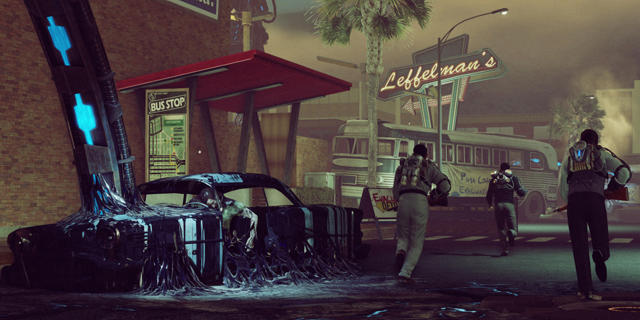
We all have one (or more): a game that we know isn’t very good, but we love it anyway. Maybe it evokes memories of a happy summer with friends, maybe there’s one shining jewel that overshadows the surrounding desert, or maybe all of the bad comes together in an amazing, swirling maelstrom and manages to make something better than the sum of all its substandard parts. These are a few of our games that aren’t great, but we love them all the same.
Justin Last: The Bureau: XCOM Declassified
 Why it’s not great: The story is all over the place, characters are only fleshed out immediately before a “powerful” moment and numerous things are left unexplained. Why is there not a push to get more people chunky power bracelets like Carter’s? How does everybody know to call the aliens by the species name upon first contact? Where do all of those turrets come from, and why is my engineer only smart enough to make them after I’ve unlocked the skill to yell “build a laser turret over there!” at him?
Why it’s not great: The story is all over the place, characters are only fleshed out immediately before a “powerful” moment and numerous things are left unexplained. Why is there not a push to get more people chunky power bracelets like Carter’s? How does everybody know to call the aliens by the species name upon first contact? Where do all of those turrets come from, and why is my engineer only smart enough to make them after I’ve unlocked the skill to yell “build a laser turret over there!” at him?
Why I love it anyway: The early-1960s aesthetic is wonderful, and I adore playing dress-up with period-appropriate clothing. Carter may be going into battle with ballistic weapons and a sci-fi bracelet-backpack combo, but by God he looks good doing it. The combat channels Mass Effect like nobody’s business, and the powers are, in my opinion, more fun to use here. Particularly, setting and detonating explosive charges as Nico DeSilva in the Hangar 6 R&D DLC campaign is great. Having my engineer place a rocket turret and then lifting it myself to get a great set of shots on enemies in cover, cloaking my sniper to expedite the revival of another teammate isn’t the tutorialized use of the power, but it’s a good tactic. Throwing drones and silicoids out to distract large enemies showcases the tight shooting and allows you to play with the weapons that all manage to feel useful but distinct from one another, including my new favorite pistol in a video game: the heavy plasma pistol.
Who should play it: Everybody who can go in knowing to value mechanics and moment-to-moment gameplay over story.
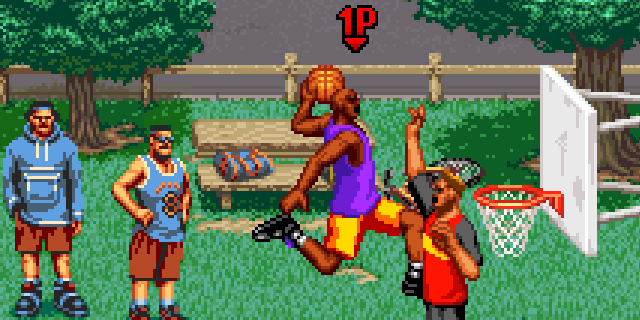
Graham Russell: Street Slam
 Why it’s not great: It’s fairly clear that Neo Geo title Street Slam grew out of a desire to compete with Midway’s NBA Jam, but the problem here was that the development team at Data East clearly didn’t know much about basketball. The balance is peculiar, your chances of making a shot from a given spot on the court don’t really seem to correlate with reality and the controls leave a lot to be desired. The players are unnamed, generic dudes with various skin and hair colors, and it just doesn’t have the level of flashy dunks and allure of speedy moves that made Jam so great.
Why it’s not great: It’s fairly clear that Neo Geo title Street Slam grew out of a desire to compete with Midway’s NBA Jam, but the problem here was that the development team at Data East clearly didn’t know much about basketball. The balance is peculiar, your chances of making a shot from a given spot on the court don’t really seem to correlate with reality and the controls leave a lot to be desired. The players are unnamed, generic dudes with various skin and hair colors, and it just doesn’t have the level of flashy dunks and allure of speedy moves that made Jam so great.
Why I love it anyway: In many ways, it’s a time capsule, bearing all the weird elements from early-’90s arcade games. The soundtrack is positively bizarre in an endearing way; it feels like the Japanese dev team wandered around until they found a guy who said he could rap and knew English and just went with it. Also, there’s just something intriguing about this “Japanese concept of urban America” design that makes the disconnect between it and real basketball almost more enjoyable.
Who should play it: People who think “NBA Jam, but sort of weird” is a good pitch for a game (and, of course, have access to a Neo Geo, or the Wii with its Virtual Console and Data East Arcade Classics disc options).
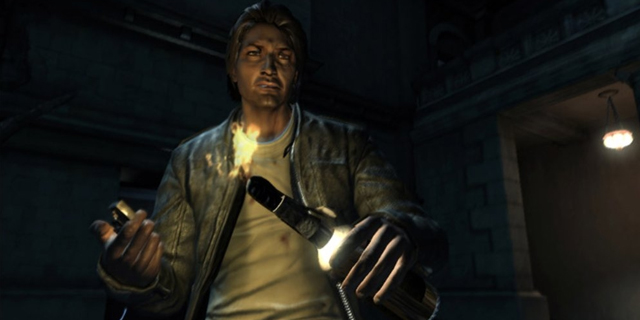
Andrew Passafiume: Alone in the Dark (2008)
 Why it’s not great: Where do I even begin? The story is an abomination, calling the characters cardboard cut-outs wouldn’t be a stretch, and the controls, specifically while driving, are generally kind of bad. This wouldn’t be as much of a problem if your driving weren’t a large part of this game, but it is. Once you get out of the opening area, you’re introduced to a (somewhat) open world to explore, but it’s full of enemies, requiring you to drive basically everywhere. It’s also plagued with technical issues, many of which can corrupt save files. The PS3 version, subtitled Inferno, was supposed to fix many of this issues, but instead ended up being just as problematic for a multitude of other reasons. Yeah, it’s a mess.
Why it’s not great: Where do I even begin? The story is an abomination, calling the characters cardboard cut-outs wouldn’t be a stretch, and the controls, specifically while driving, are generally kind of bad. This wouldn’t be as much of a problem if your driving weren’t a large part of this game, but it is. Once you get out of the opening area, you’re introduced to a (somewhat) open world to explore, but it’s full of enemies, requiring you to drive basically everywhere. It’s also plagued with technical issues, many of which can corrupt save files. The PS3 version, subtitled Inferno, was supposed to fix many of this issues, but instead ended up being just as problematic for a multitude of other reasons. Yeah, it’s a mess.
Why I love it anyway: Sure, yeah, it’s far from a good game, but it managed to do so many interesting things that I can’t help but love it. It conveys everything to you through your character: you’ll see your items (and how much inventory space you have) by physically making your character look through your jacket, for example. It’s also how you notice your wounds. Yes, there’s a healing system, which is a surprisingly cool thing you rarely see in survival horror games. You need specific healing items for specific wounds, and with the item scarcity, it makes scavenging for those items in the open world pretty engaging. The combat itself isn’t fantastic, but the game’s use of fire, specifically needing to use fire to finish off enemies, is an interesting twist. You can attack and wound enemies with normal ammo, but you need “fire bullets” to actually deal the finishing blow (although you can also use molotovs, for example). It’s a host of interesting, well-designed mechanics stuffed in an otherwise-flawed experience, but one I liked way more than I expected.
Who should play it: Anyone looking for a survival horror game with less emphasis on pure action and more on actual survival. You can dig up a copy for the Xbox 360, PS3 or PC for basically nothing. Just avoid the PS2 and Wii versions; they are essentially a different game entirely and way worse as a result.
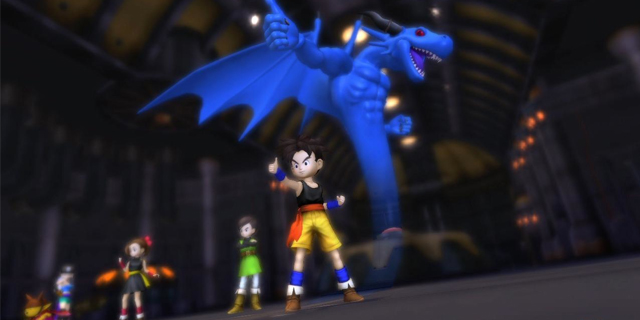
Henry Skey: Blue Dragon
 Why it’s not great: The game reeks of childish design; the majority of your main party are kids, the music choice ranges from slightly weird to impossibly strange. The main boss fight theme, sung by the lead singer of Deep Purple, is so insane that you can’t believe it didn’t come from a parody YouTube account. The storyline is really simple, and the gameplay is somewhat shallow. Don’t even get me started on Marumaro’s voice. That little yellow imp forced me to hit the mute button every few minutes. Nobody considers it one of the greats among Japanese-style RPGs.
Why it’s not great: The game reeks of childish design; the majority of your main party are kids, the music choice ranges from slightly weird to impossibly strange. The main boss fight theme, sung by the lead singer of Deep Purple, is so insane that you can’t believe it didn’t come from a parody YouTube account. The storyline is really simple, and the gameplay is somewhat shallow. Don’t even get me started on Marumaro’s voice. That little yellow imp forced me to hit the mute button every few minutes. Nobody considers it one of the greats among Japanese-style RPGs.
Why I love it anyway: Did I mention the main boss theme? It definitely fits the description of “so bad, it’s good.” It’s catchy, unique and absolutely unforgettable. The game deserves props for taking a chance. And you know what? So does the entire development team, because you can tell there was a ton of effort put into this game. The world is massive, and the early-360 visuals were bursting with color. The team tried to impose some neat twists in the game, and the animal shadows, no matter how many times you used them to attack, looked and felt satisfying. Sure, it’s “kiddie” sometimes, but it focuses on fun, exploration and creating a really distinct team dynamic. One section, which has you trapped in a town at the mercy of a psychotic tree, is one of the most creative scenarios I’ve ever seen in a game, and it totally pushes the game to beyond average.
Who should play it: If you’re an RPG fan and you have a high tolerance for the inane, the experimental and the outright wacky, give it a go. I’ve finished at least five RPGs that gained better critical acclaim that weren’t nearly as fun.
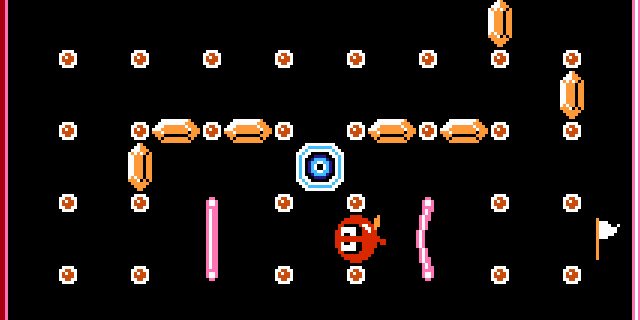
Chris Ingersoll: Clu Clu Land
 Why it’s not great: Let’s get the obvious out of the way up front: Clu Clu Land is a pale imitation of Pac-Man, like so many other arcade games of its era. You still maneuver a barely-personified round object through a maze trying to collect all of the objects contained therein while avoiding contact with enemies that you can dispatch only under the right conditions. But Clu Clu Land‘s ingots are hidden in the maze itself, and part of the challenge is to find them and eventually reveal a sort of image they construct. Part of the problem? There are only so many possible images per level, and once you recognize which one you’re on, finding the rest of the ingots becomes a rote task. The other problem is the fact that you don’t actually directly control the movement of your avatar. Instead you turn her (yeah apparently it’s female but it’s also a sort of jellyfish so whatever) by extending her arm left or right and then catching it on one of the poles that make up the maze. It’s incredibly awkward and disorienting at first, and doesn’t really get much easier with practice.
Why it’s not great: Let’s get the obvious out of the way up front: Clu Clu Land is a pale imitation of Pac-Man, like so many other arcade games of its era. You still maneuver a barely-personified round object through a maze trying to collect all of the objects contained therein while avoiding contact with enemies that you can dispatch only under the right conditions. But Clu Clu Land‘s ingots are hidden in the maze itself, and part of the challenge is to find them and eventually reveal a sort of image they construct. Part of the problem? There are only so many possible images per level, and once you recognize which one you’re on, finding the rest of the ingots becomes a rote task. The other problem is the fact that you don’t actually directly control the movement of your avatar. Instead you turn her (yeah apparently it’s female but it’s also a sort of jellyfish so whatever) by extending her arm left or right and then catching it on one of the poles that make up the maze. It’s incredibly awkward and disorienting at first, and doesn’t really get much easier with practice.
Why I love it anyway: Did I mention that you can play this game cooperatively? I mean… technically both players are in competition to find the most ingots, but you’re still sort of working together to make the image. And instead of having to eat a Power Pellet and then having a limited time to eat ghosts, you have a sonic wave you can use at will to stun the enemy urchins. When they’re stunned, you can slam them into the wall and squash ‘em, which is awesome. Clu Clu Land was one of the first NES games I ever played, and holds sentimental value for me because of that as well.
Who should play it: Gaming historians might want to experience the origin of The Legend of Zelda‘s rupee sprite (the Ingots); the urchin enemies are smaller versions of that game’s Digdogger boss as well. Other than that, I think Clu Clu Land is a great beginner game despite the awkward control scheme, and discovering each stage’s completed image can be great fun for younger players.
What bad games do you love to play anyway? Tell us!



















